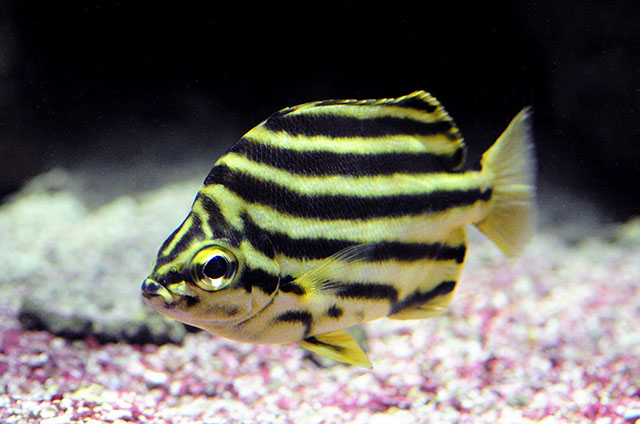| Microcanthidae (Stripeys) |
| 16 cm TL (male/unsexed) |
|
reef-associated; brackish; marine; depth range 1 - 140 m, oceanodromous |
| Indo-Pacific: East Asia (southern Japan, Korea, the eastern coast of China, Taiwan and Hong Kong), Hawaii and Western Australia. |
|
Dorsal spines (total): 11-11; Dorsal soft rays (total): 15-17; Anal spines: 3-3; Anal soft rays: 13-15. This species is distinguished by the following set of characters: coloration - fifth body stripe inflected toward the anal fin origin at an angle of 120-150° (usually 130°); lower abdomen usually with a broken stripe, as a series of 2-5 (usually 3) spots and short dashes (Ref. 123714). |
| Benthopelagic (Ref. 58302). Inhabits coastal and lagoon reefs, also in dense aggregations under ledges and in caves during the day (Ref. 9710). Also observed in rocky areas and occasionally in harbours, embankments, and coastal ports. Adults often school in large groups. It ranges between 10 and 30 m depth, but can occur as shallow as 0.3 m to as deep as 300 m (Ref. 123714). Young feeds on small crustaceans and algae (Ref. 3921). |
|
Least Concern (LC); Date assessed: 12 October 2018 Ref. (130435)
|
| harmless |
Source and more info: www.fishbase.org. For personal, classroom, and other internal use only. Not for publication.

